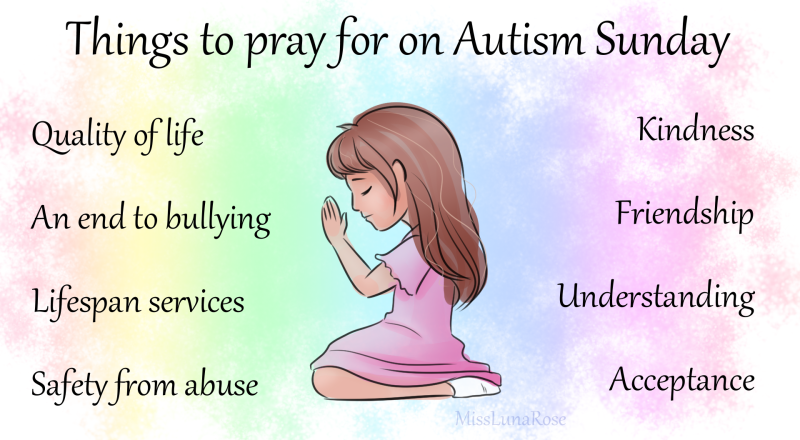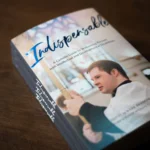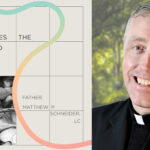The Anglican Diocese of Oxford made what I consider the best guide for including autistics in Church. Ann Memmott PGC, who helped prepare this made me aware of it. I think it makes many good points. Here I will cover its introduction, some basics, models of disability, concrete examples, and autistic culture.
Anglicans (or the Church of England) have theological differences from us Catholics but none really affect how autistics would be included in Church. Their services are much more like a Catholic Mass than like a Baptist, Pentecostal, or non-denominational service.
Introduction to Autism
The guide starts by giving an excellent one-paragraph summary of autism: “Autism is a brain design difference. It is present at birth and remains different for life. It is a part of human diversity, sometimes called a ‘neurodiversity’. An increasing number of autistic people regard themselves as part of a natural minority group.”
This guide gives indications that Nicodemus had autistic traits. It notes:
He approaches Jesus in the quiet and dark, away from the deafening crowd. He misunderstands metaphor, and Jesus re-explains it to him. Later, Nicodemus grabs a rule book to try to save Jesus, and, at the tomb, there’s Nicodemus staggering up the hill with a simply extraordinary amount of herbs and spices. Normally people would bring a small quantity. All of this reads as entirely normal autistic behaviour, and there he is at the tomb, as autistic as ever, and very much part of Jesus’s life.
Basic Accommodation in Church
This guide gives what it calls a 2-minute checklist for basic autism accommodation. It is easy for almost every church to implement. I paraphrase them:
- Check the lights.
- Check the noise level.
- Make the building layout clear to the autistic person.
- The order of Mass or other activity: are the instructions clear? (I think the regular order of Mass helps here.)
- Literal language.
- What about physical contact? Have we thought about how water splashing or shaking hands might affect an autistic?
- Do we have a rest area an autistic can escape to if recharging is needed?
- Be aware of differences in body language, especially eye contact, if socializing is part of an activity.
- Clear and precise: we do much better with clear and precise descriptions.
Models of Disability
Usually in autistic advocacy, we compare the medical and social model of disability. This guide mentions those two and the charity model.
The medical model is something coming from external where autism is something to be fixed. We all need to be adjusted so we behave like mediocre neurotypicals rather than excellent autistics.
The charity model is described: “The church does things to autistic people, for example praying for inappropriate cures that they may not want, or treating them as tragedies, with suffering parents. Often, the heroes are the people doing the unwanted things to unnamed autistic people, and getting awards for it. All rather curious, and rather unpleasant to experience, as the autistic person.”
There can be an appropriate charity model: providing help beyond mere requirements to autistic people is a form of charity. But when it is about curing us or just about how autism is pure suffering for the person and their family, that is not true charity.
The guide explains why the social model is most appropriate for Churches. It states:
The most current and appropriate is the Social Model. In other words, the view that society makes it difficult for autistic people to access buildings and events… Working together, supporting one another, means a good result for everyone. It is a respectful model that honours the strengths of autistic people, whilst acknowledging that some need support. Jesus used it in how he enabled Nicodemus to give of his best as an autistic friend.
Concrete Examples for Church Accommodation

The whole guide has a bunch of excellent illustrations of how Church can be difficult like not knowing who will give what when entering or leaving or all the unwritten social rules for certain aspects of Church. These are numerous so you can read the whole guide if you want them.
The guide notes, “If you say “Thanks VERY much” in a sarcastic way, some autistic people may not hear the tone change, and may think you are saying this as a compliment.” Our literal understanding of words can cause many difficulties like this.
The guide quotes an autistic young person: “I went to Junior Church to learn about God and about becoming a Christian, but for me it was all ‘colour this in,’ and singing. If I wanted to colour stuff in, I could do that in my house.”
Autistic Culture
Towards the end, the guide does a good job of summarizing autistic culture:
Autistic people are likely to be very straightforward in how they communicate. It’s about minimising brain heat, by keeping social chat as short as possible. Whilst non-autistic people often thrive on ten minutes of social chatting before approaching the real topic of conversation, an autistic person may go straight to the topic. It’s not rude, for us. It’s culturally and practically different. We may also suddenly stop talking about the topic and leave, or we may talk about the topic in intense detail…
Because autistic people are having to guess the emotions of non-autistic people, they may not guess correctly. Likewise, the non-autistic people are not good at guessing the emotions of autistic people…
It is acceptable in autistic culture to be straightforward. To get straight to the point. To use literal language. To avoid eye contact. To sit next to someone, not facing them. And to email accurate information in great detail, until a point is understood.
I can tell you I did not get this last one all the time: I’ve sent off a few detailed emails that came across as angry to NTs even though I just wanted to show why X is a good idea in detail.
The guide accentuates this specific point about our tendency to detail quite well on the next page: “With autistic culture, it is always appropriate to state when there is an error, and to keep stating it and trying to fix it until the error is fixed. That is polite, respectful and appropriate amongst autistic people. It would be shockingly rude in our culture not to do so. Unfortunately, non-autistic culture often decrees that it’s polite to not mention errors. Especially if it’s someone of a more senior rank.”
Conclusion
Go read this whole guide if you participate in such ministry or want to welcome autistics in Church. It is only 27 pages and avoids technical language. If you read this far, you can read more of the guide.
I hope Catholic dioceses or national Catholic organizations can adopt something like this. I would be glad to help with such a guide. We can do so much more to help autistic people.










[…] Downloadable Guides for Church Accommodations for Autistic Attendees […]